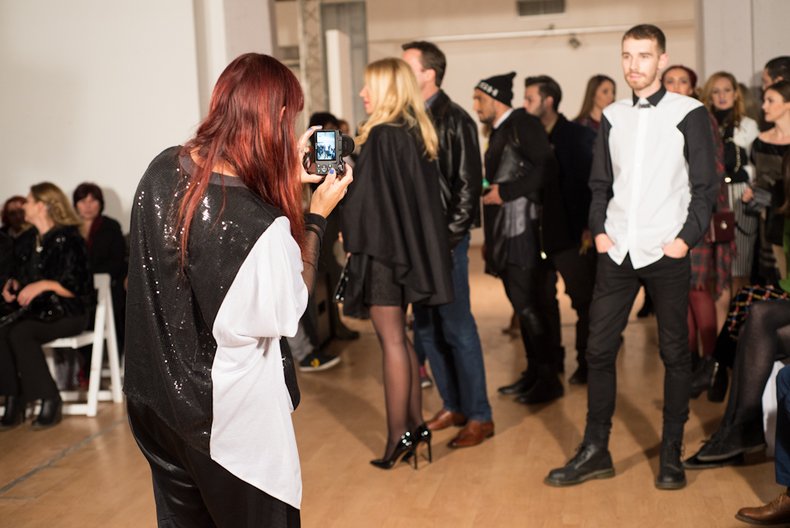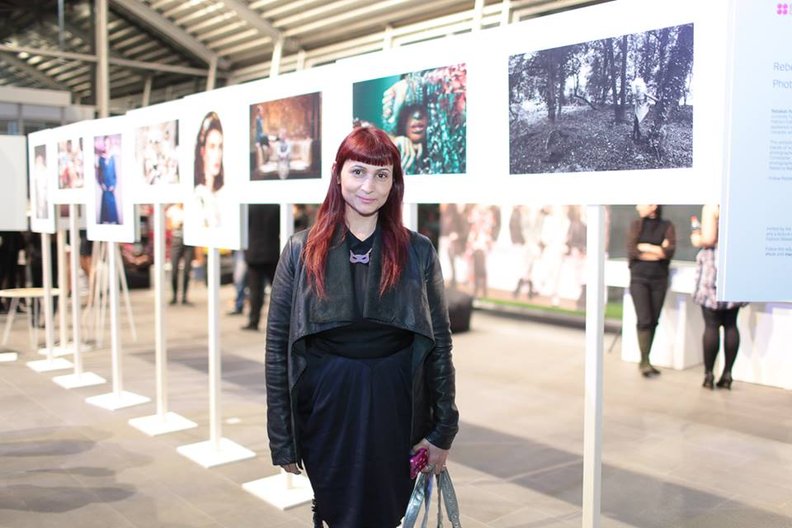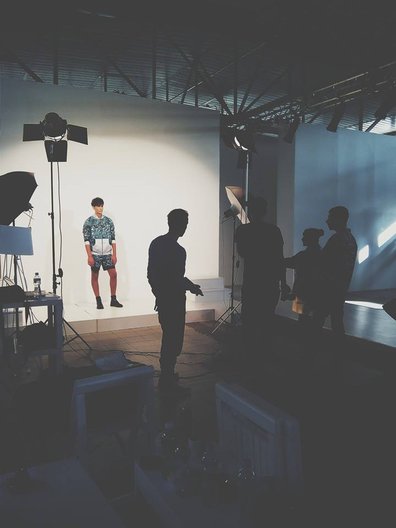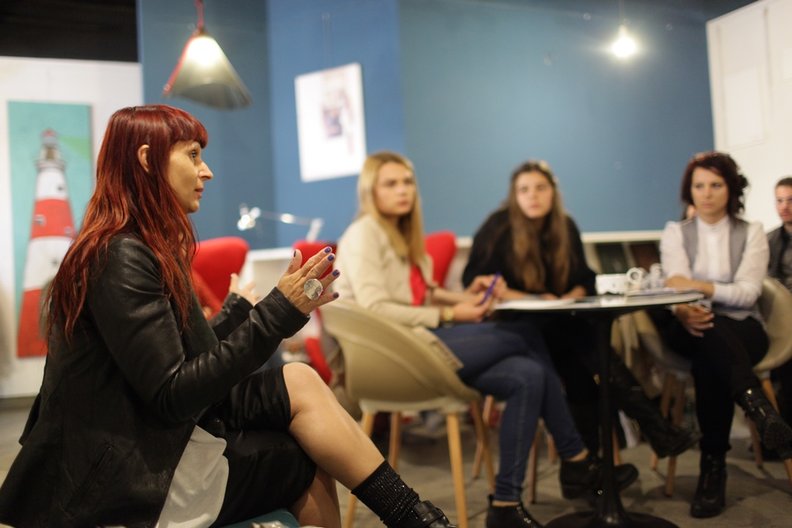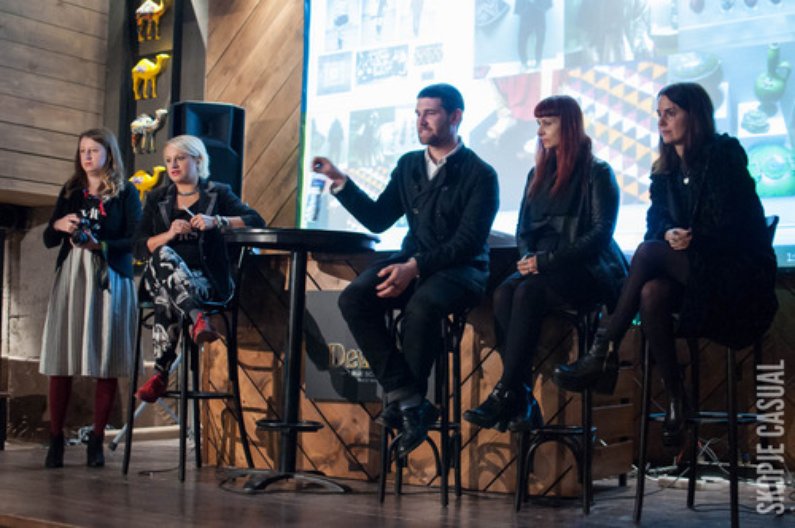1 December 2014
by Kendall Robbins
As part of the 10th season of Skopje Fashion Weekend (FWSK), we were pleased to invite UK stylist and blogger Rebekah Roy to the event to explore the increasingly important themes of digital communication and fashion. Running from the 23rd - 27th October, a group of 12 local fashion bloggers and photographers worked with Rebekah over the 5 days to cover the fashion week events. Participating in daily discussions on the role of digital in fashion communication, the bloggers and photographers then went to work preparing pieces to cover the evening fashion events. Through these exercises they learned to question their online voice and how they could use this to present Macedonian fashion to an international audience.
Rebekah's trip was fully packed though, and in addition to the workshop she also joined seminar on contemporary movements in fashion with Robert Cavell-Clarke from Notjustalabel, our own Kendall Robbins and local bloggers stylist.mk. An exhibition of her work was also featured in the Audi-Porsche Salon, the central fashio week venue. In a final celebration of her exploration of Macedonian fashion over the week, Rebekah was invited to style a shoot featuring local designers.
Building on her workshop programme, here we ask her a few questions about working in fashion in London and globally, and the effect digital is having on the industry:
What is special about London compared to other fashion capitals?
London is an eclectic mixture of old and new side by side, with buildings like the Shard contrasting with the gothic beauty of Tower Bridge. The city does not have a particular architectural style, having accumulated its buildings over a long period of time, and its fashion reflects this. London invites people to express their individual style. There are the tailored gentlemen of Savile Row, the punks of Camden, the trend-setters of Shoreditch, and the chic West End girls.
What role do you believe digital communication plays in fashion globally? Do you think the fashion industry is benefiting from fashion becoming more accessible through blogs, online magazines and social media?
Digital communications have changed every aspect of how we work. The pace of the whole industry is faster; now, the consumer can buy garments the moment they are shown on the catwalk. From a consumer point of view it’s great: you can form your own opinions, find like-minded people and shop how and when you want.
Social media has forced the fashion industry to be inclusive. It is an enabler - if you have a small brand, you can market yourself to look like a big brand, so you can compete on a higher level. Brands like Burberry that embraced digital communications early on have become trailblazers, and now every brand uses them as a benchmark. We are slowly seeing more brands and fashion PRs embrace and understand social media. It’s expected that your brand has a website and that you will communicate directly with your customers on a blog, Instagram, Twitter, YouTube, Facebook, Google+ and Pinterest. That’s a good thing for fashion, and we should be already thinking ahead to what the next expectations will be.
Can you tell us about your international work and connections? Do you work or cooperate with fashion designers, critics or bloggers overseas?
There is an online fashion community that one can easily tap into. In fact, most of my international work and connections have developed from online contacts. Usually someone initially contacts me because of my website or blog. I also often use Twitter to make contacts, and ask for suggestions if I’m going to a new place and that way I can often meet a new group of bloggers. I've gone to the US, Germany, Switzerland and Turkey to do fashion shoots with people that I've met online.
This year I've had the opportunity to do a fashion film with designer Norma Hauri in Jakarta. It was quite an exciting project as we think we made the first fashion film focused on Muslim fashion, which will be presented during Jakarta Fashion Week 2014. I also did a lookbook shoot with Billy Tjong while in Jakarta and I shot several emerging designers’ collections from Pakistan in London.
What does contemporary fashion expect of emerging designers in terms of ideas, quality and innovation? How does one stand out in such a competitive environment?
Emerging designers are expected to compete on the same level as any other designer. Why would one expect less? When I'm looking at fashion graduates' first collections, I don’t always expect the best and most expensive fabrics or even the best finish. We know these things are important, but we understand that with the right budget those things can be changed. However, that doesn’t mean that if something is poorly made one can always see past it. I've seen some innovative garments where pieces are falling off, and it ruins the overall feel of the garment.
I'm always looking for something new, creative, innovative and that has potential to grow. So much of the work to produce a beautiful final product is in preparation and research. The best way for emerging designers to stand out in such a crowded field is to do what they love, to explore and develop their own ideas. The particular challenge that new designers face is that while they do this, they also have to multitask because they’re often their own brand manager, PR, social media manager, and business manager - and part of standing out in a competitive environment is doing all of those things well.
